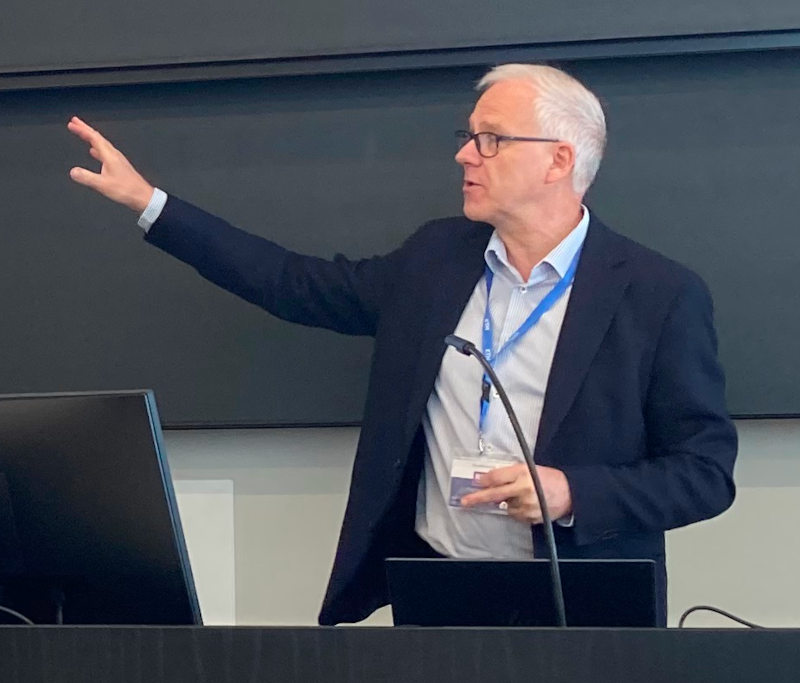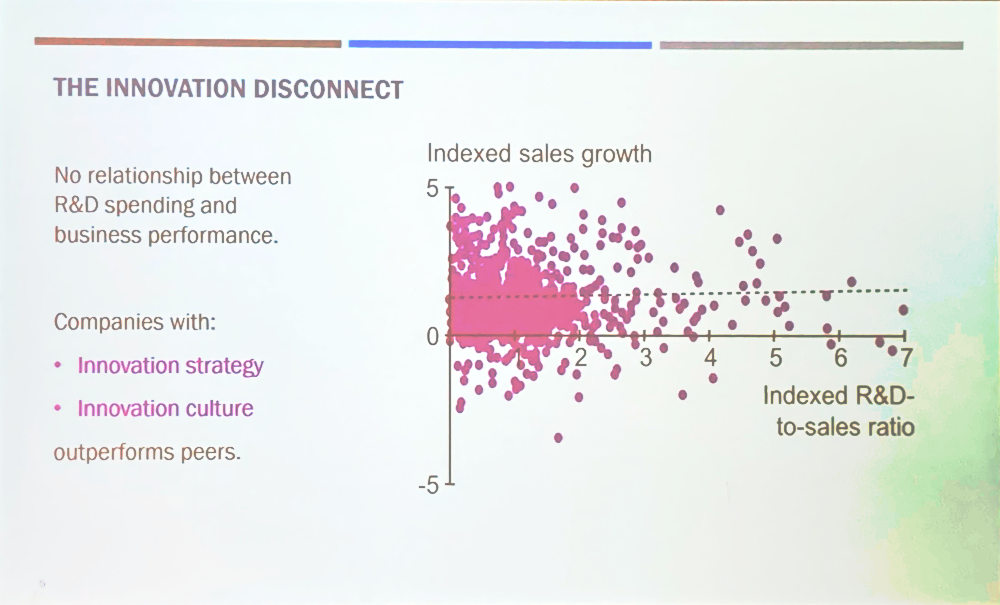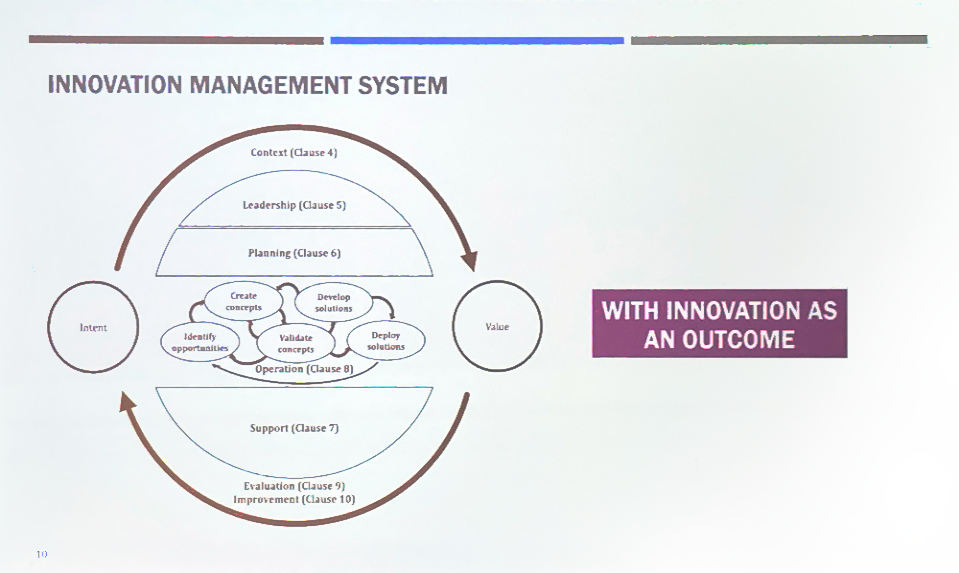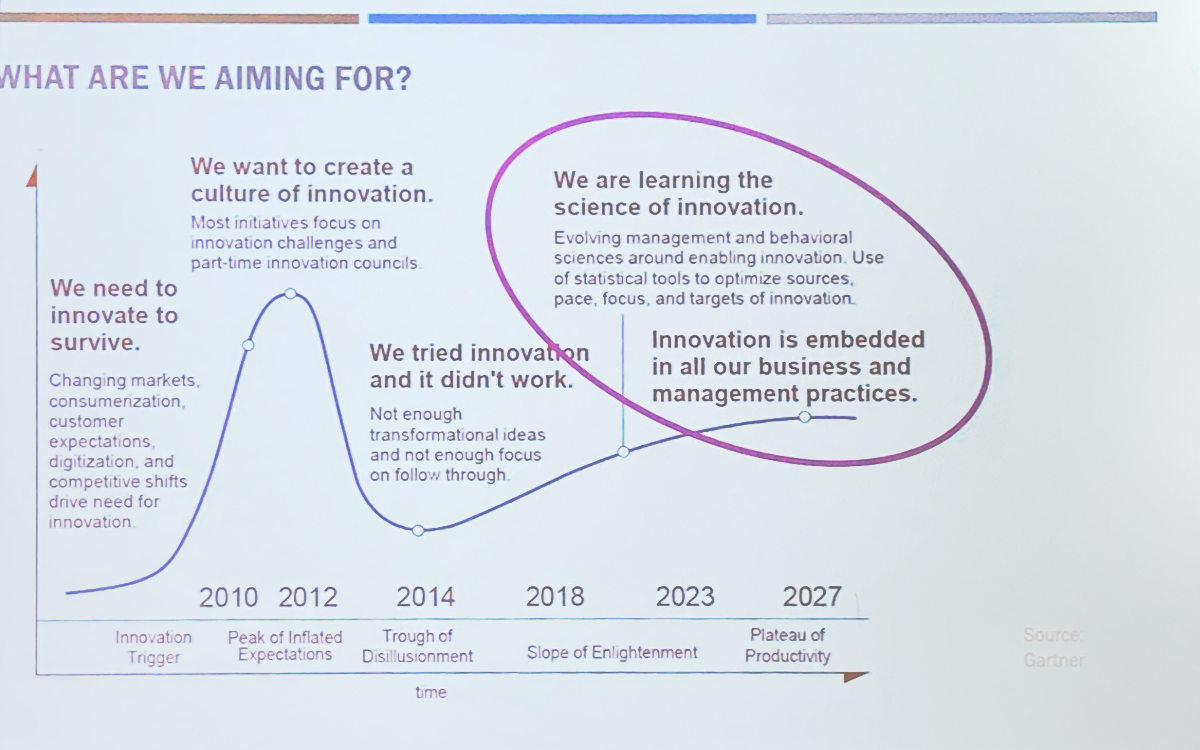Innovation is getting higher on the agenda for many organisations but there is a disconnect between spend and performance, says Professor Magnus Karlsson. Ahead of the launch of the international standard ISO 56001 he explains that the purpose of an Innovation Management System is to improve an organisation’s ability to realise value under conditions of uncertainty.
It was from this thought that the idea of an Innovation Management System began. The proposal is a set of best practice, gained from the international practitioners, that could be plugged into the DNA of any large organisation.
Now 15 years on we have a set of documents that are taking us towards that goal.
Innovation Management System has three parts:
- Fundamentals ISO 56000:2020 – this document sets out the vocabulary and fundamental concepts to encourage consistent use of terminology.
- Requirements ISO 56001:2024 (to be launched September 2024) – this document outlines what needs to be in place in order for certification. It is based on a consensus over the key elements.
- Guidance ISO 56002:2019 – this document provides recommendations, and these have been adopted by a number of organisations. A number of research papers are being produced around this.
Recent studies have found that there is no correlation between spending on R&D and improved business performance. There is however a strong correlation between companies that have an innovation culture and an innovation strategy with good business performance.
The question emerging from these studies is therefore: is it possible to codify this knowledge and make it more accessible to companies so they can extract optimum benefit from investment in R&D?
Eight principles of an Innovation Management System
These are the headlines for the standard. It is about understanding the context, the environment that you are working in, the trends, technology, user behaviour and sustainability, and it gives you the key elements that need to be in place.
- Realization of value
- Future-focused leaders
- Strategic direction
- Culture
- Exploiting insights
- Managing uncertainty
- Adaptability
- Systems approach

Benefits
Many companies are good at incremental innovation, but when it comes to radical innovation they face challenges within their organisation.
Having a standard management system provides a common language and a framework that promotes collaboration – within an organisation, between organisations, and within an ecosystem.
It also provides a pathway for innovation that creates guide rails, increasing tolerance to higher uncertainty and the potential for radical innovations.
By removing the obstacles you can innovate faster, and implement milestones for determining progress.
ISO 56001 has the potential to be a gamechanger – if it helps organisations to build capabilities, demonstrate compliance and innovate more effectively.
Background reading
The experiences of 16 diverse organisations from around the globe are reviewed in this book. It includes those that have implemented a management system before the Standard was released and those following it now, completely or partially. It discusses the lessons learned and their implications, and includes insights into how to take innovation management to its next level to address opportunities and challenges in organisations and societies.
Changing the Dynamics and Impact of Innovation Management: A Systems Approach and the ISO Standard
Edited by: Joanne Hyland (rInnovation Group, USA & International Society for Professional Innovation Management (ISPIM), UK & Standards Council of Canada (SCC), Canada), Magnus Karlsson (KTH Royal Institute of Technology, Sweden & Research Institutes of Sweden (RISE), Sweden & Swedish Institute for Standards (SIS), Sweden), Ingrid Kihlander (Research Institutes of Sweden (RISE), Sweden & KTH Royal Institute of Technology, Sweden), John Bessant (University of Exeter, UK), Mats Magnusson (KTH Royal Institute of Technology, Sweden), and Jimmi Kristiansen (Aalborg University Business School, Denmark & rInnovation Group, Europe & Danish Standards Foundation, Denmark)




